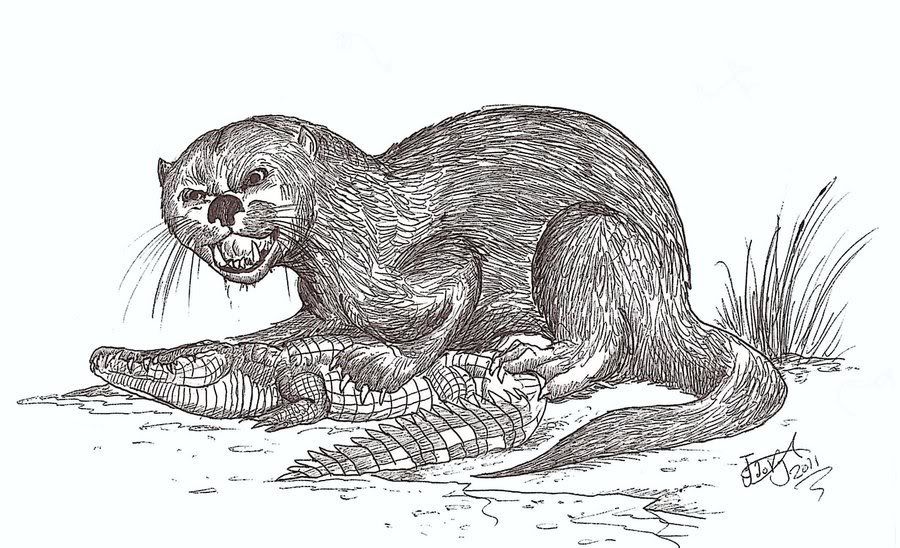19 April 2011
Fun With Body Mass Estimates
The latest issue of the Journal of Vertebrate Paleontology has been a minor media sensation because it includes a description of the largest known rabbit, Nuralagus rex from the Pliocene of Menorca (as neat an illustration of the Island Rule as ever there was). For those of us interested in carnivores, though, the issue also included the description of, as the authors put it, 'a gigantic otter.' The otter is from the Pliocene Awash region of Ethiopia - site of many a famous hominid discovery - and is a new species in the genus Enhydriodon: E. dikikae. Giant animals are always fun to read about, and they're even more so to someone writing a dissertation on mammal body size evolution. The paper includes dental measurements for the new species, including the dimensions of the first lower molar (the carnassial, for those that know your carnivore teeth), which is tightly correlated with body size. I couldn't resist plugging the E. dikikae measurements into the body mass regression for mustelids developed by Blaire Van Valkenburgh to get some kind of idea of the size of the animal. There are two specimens included in the paper: the smaller, more complete tooth suggests a 77 kg animal, while the larger, incomplete tooth may represent an animal of 126 kg. The former mass would put the individual in the same size range as modern giant otter (Pteroneura brasiliensis), but the larger individual would be in a class by itself; a 126 kg otter would be roughly the same size as a large jaguar or a small lion. Of course, as with any body mass estimate for exceptionally large (or small) animals, these numbers should be taken with a grain of salt: the very fact that E. dikikae is so big means that it falls well outside the range of masses in living mustelids (with the not insignificant exception of the giant otter) and that any estimate of its weight is therefore extrapolating beyond the available data (the same issue has been raised for mass estimates of giant South American rodents). Still, it's fossils like this that remind me why I consider myself lucky to be a paleobiologist; after all, what other field would publish journals describing giant rabbits and otters in the same issue? Life, and in particular prehistoric life, is just so cool.
Subscribe to:
Post Comments (Atom)

No comments:
Post a Comment